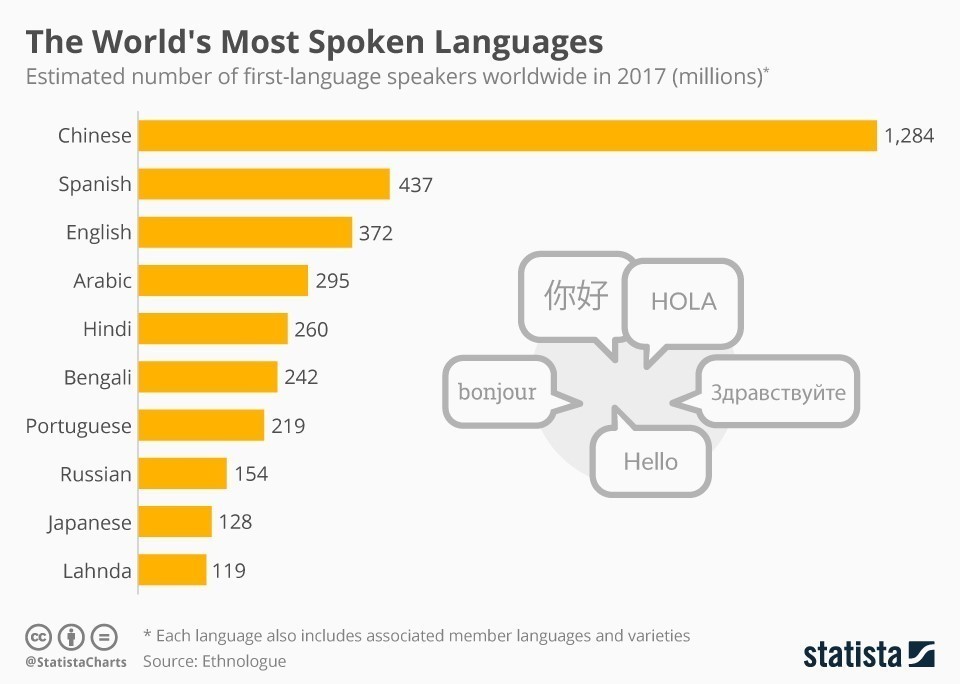Machine learning is tearing down language barriers. What does this mean for trade?
- by 7wData

We all know what “intelligence” means and what “artificial” means; yet, put them together into “artificial intelligence” and we get confusion, trepidation or maybe even laughter. The phrase “artificial intelligence” may not ring the same bells for everyone. One form of artificial intelligence that should be ringing everyone’s bells is called Machine Learning. Machine Learning is transforming our world faster than most realize; in particular, it is transforming trade.
Machine learning represents a radical change in the way computers “think”. Before machine learning, we taught computers to do things with computer programs that explained, step-by-step, what the computer should do. This limited computers to mimicking human thinking only where we understand step-by-step how humans think. For example, we understand how we do arithmetic and algebra since this is conscious thinking. By contrast, we have no idea how we recognize a face or keep our balance when running over an open field since this is unconscious thinking. Before machine learning, computers could only perform conscious-thinking tasks since those were the only ones we knew how to program. Unconscious-thinking tasks were beyond the reach of computers since they could not be programmed.
Machine learning changed this by skipping the step-by-step programing. With machine learning, the computer (the “machine” part) uses a very large amount of data to work out how to best guess the solution to a particular problem (the “learning” part). Thanks to exponential advances in computing, power and access to preposterous amounts of data, computers trained by machine learning routinely achieve human-level performance on unconscious-thinking tasks – like recognizing handwriting, speech or bone breaks in X-ray images. One game-changing application of machine learning is Machine translation.
Machine translation – machine learning applied to language – has gotten amazingly good in recent years. And it’s free, works instantly and is getting better every day. This one development will change the way the modern world works, since language barriers have been an important hindrance to international commerce since time immemorial.
Machine translation is not some exotic future technology in its beta testing phase. It is already on your smartphone, laptop and tablet. Free apps like Google Translate and iTranslate Voice now work quite well between major languages. Other smartphone apps include SayHi and WayGo. And it is widely used. Take Google, for instance: it does a billion translations a day for online users. Microsoft introduced automatic, instant translation into Outlook email; Twitter offers translation on most foreign-language tweets. YouTube has instant machine translation for many foreign-language videos: just go to the settings “gear”, click on “captions”, and choose “auto-translate”. Instant, free, spoken translation is also possible on Skype: the add-on Skype Translator will allow you to understand foreign-language speakers you are Skyping with. It is not perfect, but being able to talk freely with someone who’s speaking a different language is nothing short of marvellous. And it will be a massive stimulus to trade.
Economists’ mainstay approach to measuring the impact on trade flows of things like a common language and distance is called the “gravity model”. It predicts that, like the force of gravity, bilateral trade flows are boosted by the economic mass of the selling nation and the economic mass of the buying nation, but diminished by the geographic distance between them.
[Social9_Share class=”s9-widget-wrapper”]
Upcoming Events
Evolving Your Data Architecture for Trustworthy Generative AI
18 April 2024
5 PM CET – 6 PM CET
Read MoreShift Difficult Problems Left with Graph Analysis on Streaming Data
29 April 2024
12 PM ET – 1 PM ET
Read More




